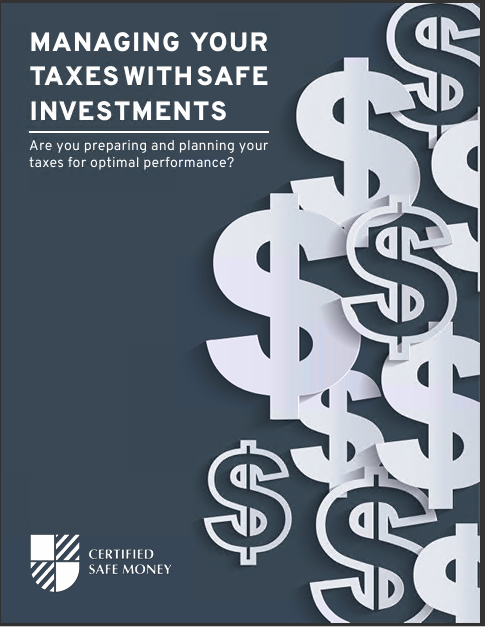Key Takeaways:
- Fixed Index Annuities (FIAs) offer potential growth tied to market performance with protection against market downturns, making them an appealing option for conservative investors.
- Despite their benefits, FIAs come with complexities such as caps, participation rates, and potential surrender charges, which can limit returns and flexibility.
Fixed Index Annuities: The Features and Drawbacks You Should Know About
Fixed Index Annuities (FIAs) have surged in popularity as a financial tool for those seeking a balance between growth potential and protection from market volatility. As of 2024, they continue to be a go-to choice for retirees and conservative investors who wish to secure their savings while still participating in market gains. However, FIAs come with both benefits and drawbacks that need to be carefully weighed. This article will delve into the key features and potential downsides of Fixed Index Annuities, providing a comprehensive guide to help you decide whether this financial product aligns with your investment goals.
How Do Fixed Index Annuities Work?
At the core, Fixed Index Annuities are insurance contracts that promise a minimum guaranteed return while offering the potential for additional earnings based on the performance of a specific market index, such as the S&P 500. Unlike traditional fixed annuities, where the interest rate is predetermined, FIAs allow your investment to grow in tandem with a market index, albeit with some limitations.
When you invest in an FIA, your money is not directly invested in the stock market. Instead, the insurance company uses a formula that determines your interest earnings based on the index’s performance. This formula is influenced by factors such as caps, participation rates, and spreads.
The Appeal of Market-Linked Growth with Safety Nets
One of the most attractive features of FIAs is their ability to offer market-linked growth without exposing your principal to the risks of direct stock market investment. This characteristic is especially appealing in times of economic uncertainty, as it provides a safety net that protects against market downturns.
For instance, if the chosen index performs well, you may see your annuity’s value increase, up to a certain cap or participation rate. However, if the index performs poorly, your investment is safeguarded, as FIAs generally have a floor, ensuring that you won’t lose money due to market declines. This feature alone has made FIAs an attractive option for risk-averse investors who still want a piece of the market action.
Understanding the Caps and Participation Rates
While the promise of market-linked growth is enticing, it’s essential to understand the limitations that come with it. The earnings potential of FIAs is typically capped. For example, if the cap rate is set at 5%, and the market index increases by 10%, your earnings will be limited to 5%. This cap ensures that while you can participate in market gains, there is a ceiling to how much you can earn.
In addition to caps, FIAs also have participation rates, which determine the percentage of the index’s gain that will be credited to your account. For instance, with an 80% participation rate, if the index goes up by 10%, your annuity will be credited with an 8% gain. These mechanisms help insurance companies manage their risk but also limit the potential upside for investors.
Spreads and Their Impact on Your Returns
Some FIAs apply a spread instead of or in addition to a cap and participation rate. A spread is a percentage that is subtracted from the index’s gain before calculating your interest credit. For example, if the spread is 2% and the index gains 8%, your annuity would be credited with a 6% gain. The spread is essentially a fee that the insurance company deducts, which can further reduce your returns.
The Role of Surrender Charges
Another crucial aspect to consider when evaluating FIAs is the surrender charge. These charges are fees imposed if you withdraw money from the annuity before a certain period, typically ranging from 7 to 10 years. The surrender charge schedule usually starts high and decreases over time. For example, if you withdraw within the first year, you might face a 7% charge, which might decrease to 1% by the seventh year.
Surrender charges are designed to discourage early withdrawals and protect the insurance company from losing money on the contract. However, they also mean that if you need access to your funds before the surrender period ends, you could face significant penalties, potentially eroding the benefits of the annuity.
Liquidity Considerations and Withdrawal Options
While FIAs are designed for long-term investment, many contracts offer some liquidity options, such as free withdrawals. Typically, you can withdraw up to 10% of the annuity’s value each year without incurring surrender charges. However, exceeding this limit can trigger fees, making it essential to consider how much liquidity you might need when choosing an FIA.
In addition, some FIAs offer riders or provisions that allow for penalty-free withdrawals in certain situations, such as terminal illness or nursing home confinement. These features can add flexibility, but they often come at an additional cost, so it’s crucial to weigh the benefits against the expense.
Tax Implications of FIAs
One of the advantages of FIAs is their tax-deferred status, meaning that you won’t pay taxes on your earnings until you start receiving payments or make withdrawals. This allows your investment to grow without the drag of annual taxes, potentially leading to higher returns over time.
However, when you do begin taking distributions, the withdrawals are taxed as ordinary income, not as capital gains. This distinction is essential for tax planning, especially if you expect to be in a higher tax bracket in retirement. Additionally, if you withdraw funds before age 59½, you may be subject to a 10% early withdrawal penalty in addition to ordinary income taxes.
The Complexity of FIAs: Understanding the Fine Print
One of the most significant drawbacks of FIAs is their complexity. These products come with a myriad of features, riders, and terms that can be challenging to understand. For instance, different FIAs may have varying cap rates, participation rates, and surrender charge schedules, making it difficult to compare options without a deep dive into the contract details.
Moreover, the sales process for FIAs can sometimes be less than transparent. It’s not uncommon for agents to emphasize the potential benefits without fully explaining the limitations or costs associated with these products. As a result, it’s essential for investors to thoroughly research and consult with a financial advisor who can help them understand the fine print before committing to an FIA.
Who Should Consider Fixed Index Annuities?
Fixed Index Annuities may be suitable for investors who are looking for a balance between growth potential and principal protection. They are particularly appealing to those nearing retirement who want to safeguard their savings while still participating in market gains. FIAs can also be a good fit for conservative investors who are wary of the stock market’s volatility but still want an opportunity for growth.
However, FIAs may not be ideal for everyone. Investors seeking maximum growth potential may find the caps and participation rates limiting. Additionally, those who require liquidity or anticipate needing access to their funds within a few years might find the surrender charges too restrictive. It’s crucial to assess your financial goals, risk tolerance, and time horizon before deciding whether an FIA is the right choice for you.
Alternatives to Fixed Index Annuities
If you’re unsure whether an FIA aligns with your investment goals, it’s worth considering some alternatives. Traditional fixed annuities, for example, offer guaranteed returns without the complexity of caps and participation rates, though they may offer lower potential growth. On the other hand, variable annuities provide more growth potential by allowing investments in various sub-accounts but come with higher risk and fees.
Another option is a balanced portfolio of stocks and bonds, which can offer growth and income without the surrender charges and caps associated with FIAs. Each of these alternatives comes with its own set of risks and rewards, so it’s essential to weigh them against the features and drawbacks of FIAs.
2024 and the Future of Fixed Index Annuities
As we move further into 2024, the demand for Fixed Index Annuities is likely to continue growing, driven by market volatility and an aging population seeking secure retirement income. However, as more investors flock to FIAs, it’s crucial to remain vigilant about the evolving terms and conditions offered by insurance companies. Staying informed and seeking professional advice will be key to making the most of these complex financial products.
Final Thoughts on Fixed Index Annuities
Fixed Index Annuities offer a unique combination of market-linked growth potential and principal protection, making them an attractive option for certain investors. However, the complexities and limitations of these products, such as caps, participation rates, and surrender charges, require careful consideration. Before deciding whether an FIA is right for you, it’s essential to understand all aspects of the contract and consult with a financial advisor who can help you navigate the fine print.











